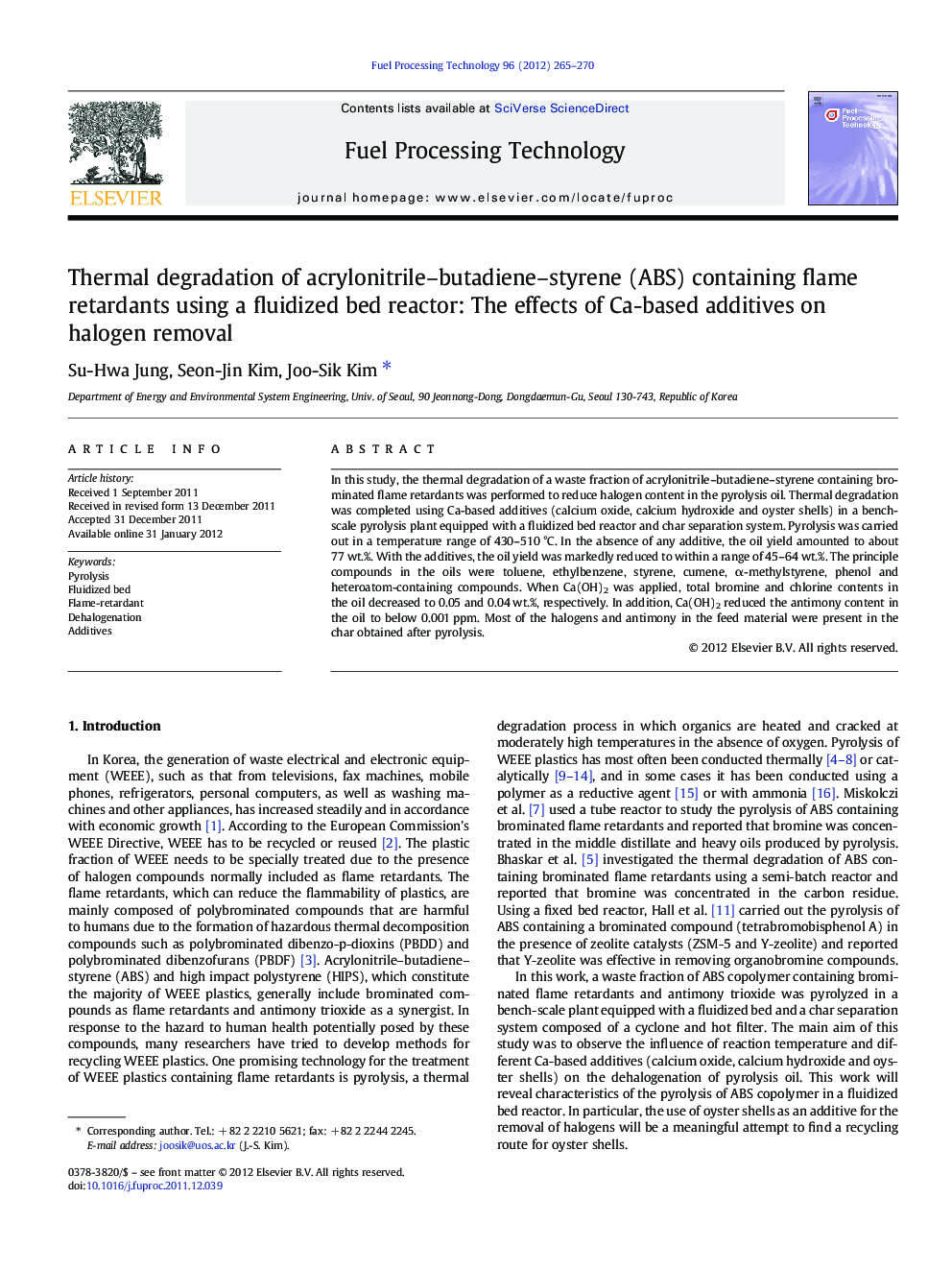| Article ID | Journal | Published Year | Pages | File Type |
|---|---|---|---|---|
| 210413 | Fuel Processing Technology | 2012 | 6 Pages |
In this study, the thermal degradation of a waste fraction of acrylonitrile–butadiene–styrene containing brominated flame retardants was performed to reduce halogen content in the pyrolysis oil. Thermal degradation was completed using Ca-based additives (calcium oxide, calcium hydroxide and oyster shells) in a bench-scale pyrolysis plant equipped with a fluidized bed reactor and char separation system. Pyrolysis was carried out in a temperature range of 430–510 °C. In the absence of any additive, the oil yield amounted to about 77 wt.%. With the additives, the oil yield was markedly reduced to within a range of 45–64 wt.%. The principle compounds in the oils were toluene, ethylbenzene, styrene, cumene, α-methylstyrene, phenol and heteroatom-containing compounds. When Ca(OH)2 was applied, total bromine and chlorine contents in the oil decreased to 0.05 and 0.04 wt.%, respectively. In addition, Ca(OH)2 reduced the antimony content in the oil to below 0.001 ppm. Most of the halogens and antimony in the feed material were present in the char obtained after pyrolysis.
► It gives results on the pyrolysis of ABS-Br in a fluidized bed reactor. ► Application of Ca-based additives including oyster shells for halogen removal. ► Ca-based additives have also an influence on the oil composition.
